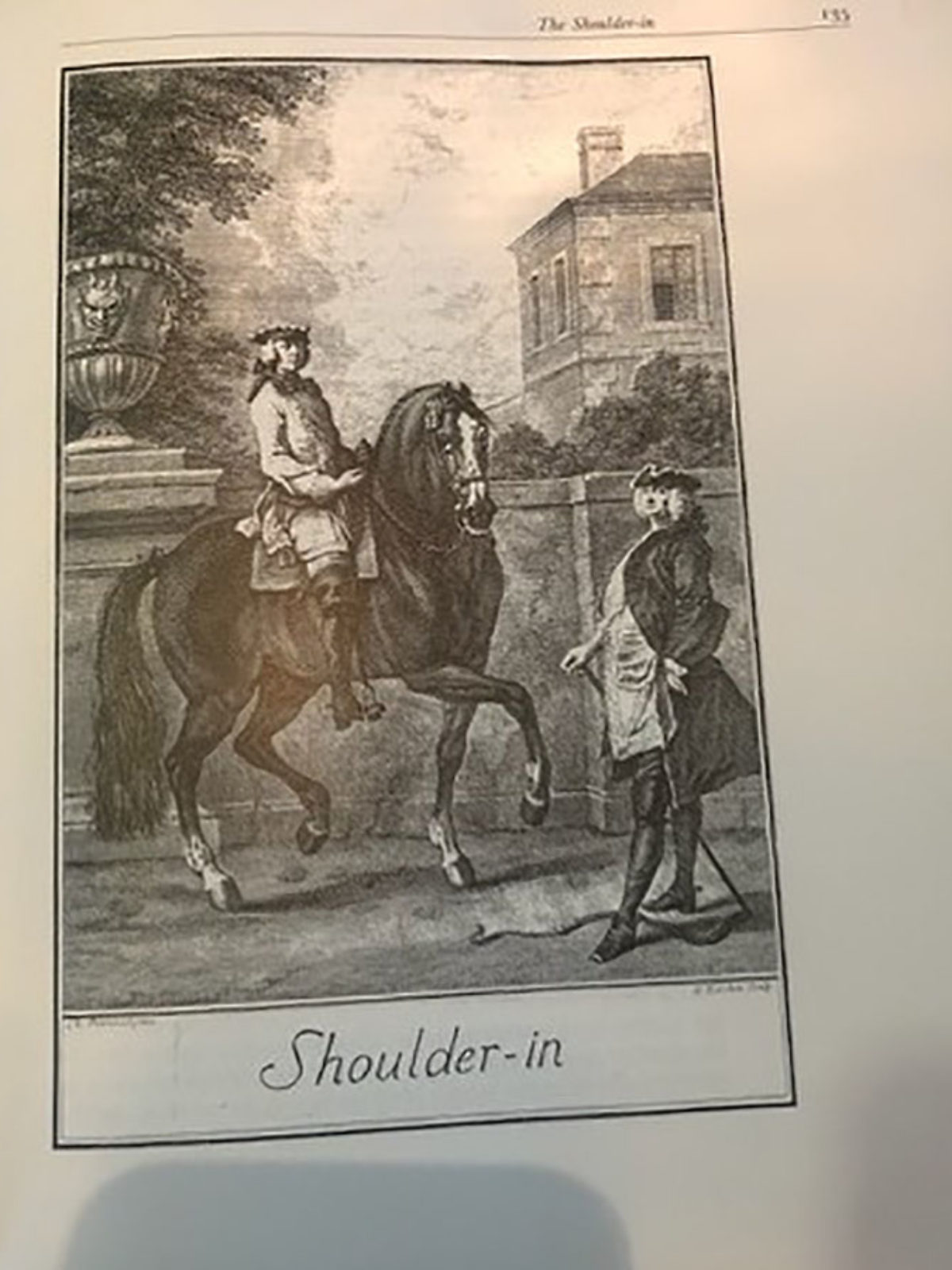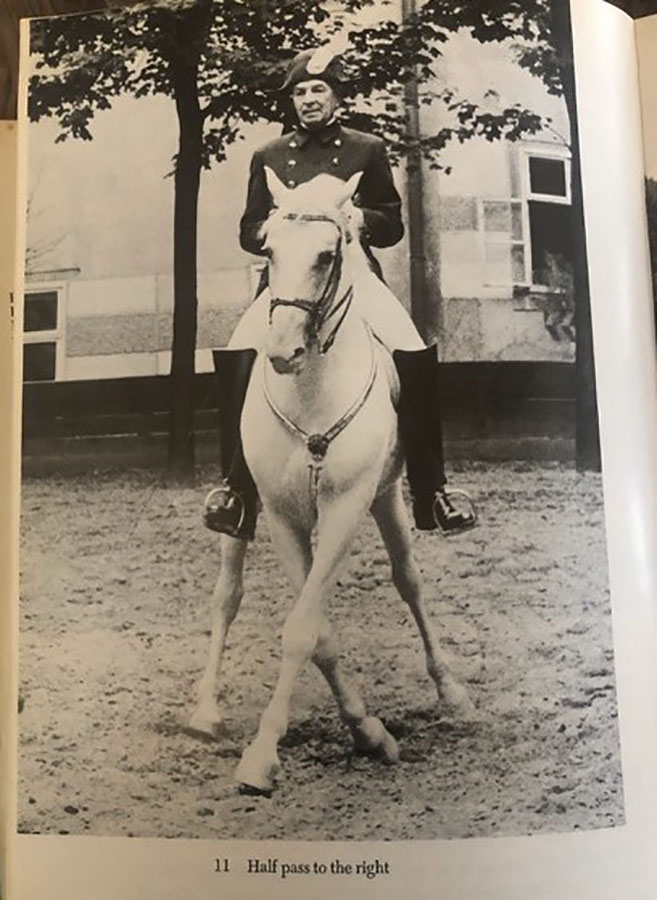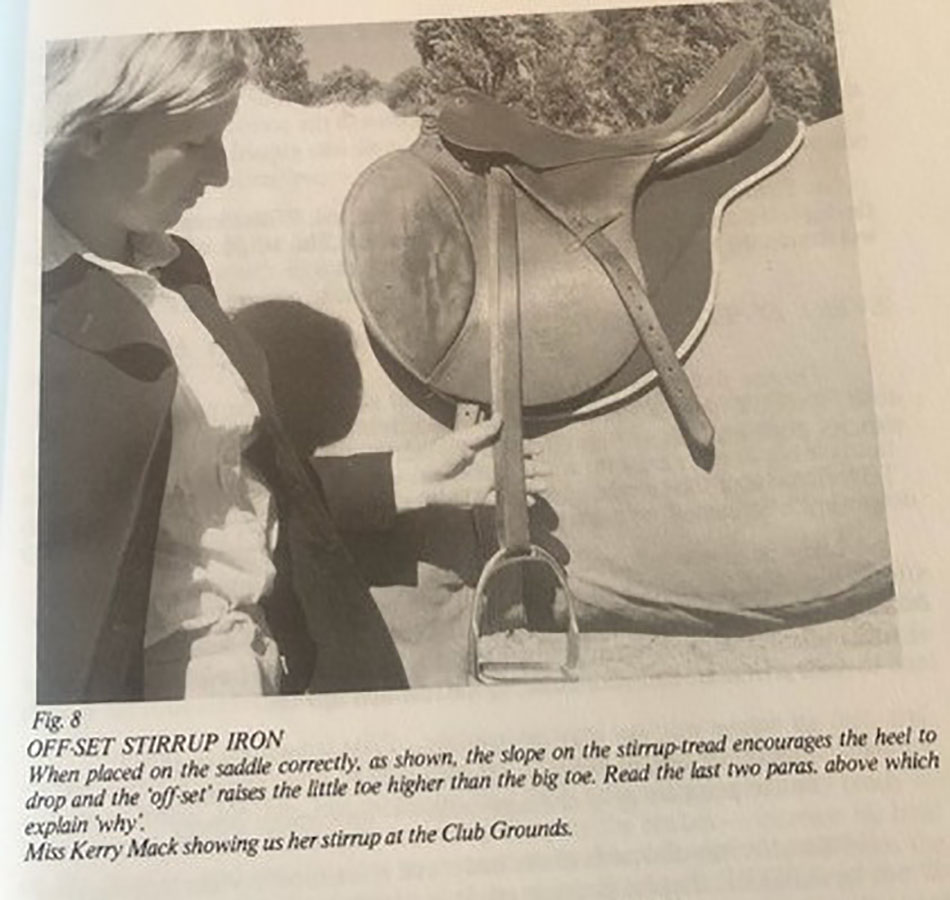From ancient Greece to modern psychology, riding has always featured in great literature. While we wait for competition to resume, now is an ideal time to supplement training with superb reading. Here are some recommendations.

“The training should
please the horses.”
“You can’t learn horse riding out of book”. I often ask people I meet what they recommend to read and this is the answer I have heard from a number of professional horse people. And I agree with them. Horses are the best teachers and the only way to become an expert is to get down and dirty with a horse or two.
However, I am a great believer that we see furthest from the shoulders of giants (to misquote Isaac Newton) and we should benefit from the experts who came before us. Reading books is one of the best ways to do this and the pandemic is giving some of us the gift of time to do this. I would like to share with you some of my favourite books. This is by no means an exhaustive list, more a starting point to whet your interest.
Let’s start at the beginning. Xenophon was a leading thinker in classical ancient Greece. He lived from 430-354 BC. His book, A treatise on Horsemanship, is surprisingly modern. He advises that the horse is a partner, that the training should please the horses, that nothing that is forced can be beautiful. This is a short, easy to read book that reminds us that horses and people are the same as they were 2000 years ago.
It was not until the Renaissance that more authoritative books appeared on the classic art of riding. One of my all-time favourites is Francois Robichon de la Gueriniere’s School of Horsemanship, published in French in 1733 and reprinted in English by J.A. Allen in 1994. I got my copy on Amazon, but it is now available as an audiobook! This is a wonderful book in three sections, starting with the basics of anatomy and stable management. Part 2 is on training horses and Part 3 is state-of-the-art veterinary care circa 1733 and is a real eye-opener. De la Gueriniere wrote a comprehensive guide to the training of horses for different purposes based on principles including using the lightest possible aids and careful use of “chastisements”, systematic training with the use of exercises to develop suppleness. He wrote about the half-halt and he invented the shoulder-in.
The French riding master offers some great exercises, for example using a small square to develop collection in the canter. De la Gueriniere’s advice: “If the horse resists in the volte… put it back to the shoulder-in. By doing so its choler and surfeit of spirit are dissipated. Such instances only occur when the rider ignores nature and pushes the horse too quickly to execute the figures. Rather the horse should be brought to competence through ease (and) suppleness, not through force, for to the degree that the horse is supple and understands the intentions of the rider, it obeys readily, unless it be of its nature entirely rebellious, in which case one ought not expect success in the school.”
Alois Podhajsky was the director of the Spanish Riding School of Vienna from 1939 to 1965. He oversaw the famous evacuation of the Lipizzaners in World War 2 and was an Olympic medallist. The Complete Training of Horse and Rider (Harrop 1967) has been my go-to reference book about training since I got my copy in 1975. If I have a problem, I will go check what he said about the exercise I am working on. Interestingly, he says of de La Gueriniere: “There is no need to discuss Gueriniere’s teachings in this book… because they are applied unaltered at the Spanish Riding School and can be seen every day”. Podhajsky describes how “the action of the rein goes through the body of the horse when it passes through his neck and back, thus bending and putting weight on the hind leg”. In other words, the horse must not shorten the neck when you use the rein, but allow the effect of the rein to go to the hind leg. This is one of my favourite ideas from this book that I try to keep in mind every day.
Podhajsky wrote a number of books where you get a sense of the depth of his love of the horse, including My Dancing White Horses. I love his book My Horses, My Teachers (1967). The basic premise of this book is that in the hardest training challenges lies the greatest learning. The trainer is the learner. This idea is aligned with the Buddhist concept of beginner’s mind that I have written about. It is worth keeping this in mind when you strike a difficulty.




“Reading books is
one of the best ways
to do this.”
Of course, there are a number of great reference books on dressage training. Not surprisingly, many originated in Germany. Riding Logic by Museler (1986) and Horsemanship by Suenig are both classics. More recently, Das Dressur Pferde by Harry Boldt is a wonderful and unique reference with diagrams and lots of instructive photos, and text in both German and English. The Principles of Riding and The Advanced Principles of Riding are the textbooks from the German Federation, which are no-nonsense references that are very useful. Gerd Heuschmann is a vet who wrote the controversial books Tug of War (2007) and Balancing Act (2012), which examined some of the ways that modern sport has departed from the classical principle, using current scientific knowledge to evaluate the significance of these changes. Paul Belasik has also examined the art and science of dressage in The Search for Collection (2009).
The Horse Control series by Tom Roberts started with Horse Control and the Bit (1971), Horse Control — The Young Horse (1974) and Horse Control — The Rider, were ahead of their time in outlining systematic training based on the principles of pressure release. “Robbie” was a master horseman born in 1900, when lives depended on well-trained horses. He moved to Adelaide after time served in India and he was a huge influence on horse training in Australia. I remember him crooning gently to a wilful youngster, “It will profit you not, my love”, and I remember him asking me his famous question: “Why do you jump up if you sit on a pin?” It is to stop the discomfort. A horse stops when you use the rein so that the pressure is released. It is the release of pressure that trains the horse. You must release the pressure. Tom’s Horse Control Reminiscences is a wonderful memoir and conveys his deep love of horses. These books have been recently reprinted.
Good training is good training and there are some great books from the Western riding tradition. Ray Hunt (1929-2009) wrote books influenced by Tom Dorrance, which became a foundation for so-called natural horsemanship. Think Harmony with Horses: An In-depth Study of the Horse/Man Relationship (1978) is available as an e-book. Ray Hunt writes about training in a way that the horse wants to do what you ask, based on understanding each other and the trainer being self-aware. He says, “A horse doesn’t know what conflict is until a human shows him.” His principle of making the right thing easy and the wrong thing difficult is a great example of a principle to incorporate in all training.


“Think about it for
a moment what it is
to lead from the back.”
Mark Rashid is a Western trainer and a prolific writer of easy to read, thoughtful books. He is also a martial arts expert and draws on Eastern wisdom in his writing on leadership, relationship and softness riding. For example, he describes the importance of relaxing the inside of your body, releasing the tension even while maintaining a secure posture. Try it. Hold the rein firmly, then keeping the same fist, just drop out the tension to create a softer hand. Horses Never Lie (2011) is a great book of his that addresses leadership in equitation.
The Power of the Herd, A Nonpredatory Approach to Social Intelligence, Leadership and Innovation, by Linda Kohanov (2013), is a thought-provoking book that outlines what we have learned from observation of horse herds, for example, that the lead mare actually leads from the back of the herd. She doesn’t need to be out the front, showing off, flattered by followers. Think about it for a moment what it is to lead from the back. Kohanov tells lots of stories of great leaders who were accomplished horsemen, such as George Washington and Winston Churchill. She distils 12 guiding principles from (1) Use emotions as information to (3) Manage contagious emotions through to (12) Enjoy the ride.
I find an understanding of the mind and the brain helps me understand the horse. Mindsight by Daniel Siegel provides a broad overview of what he calls “interpersonal neurobiology”. Interpersonal can be between human and horse. Beyond Words by Carl Safina (2015) examines the minds and lived experience of animals; What’s It Like to be a Dog by neuroscientist Gregory Berns describes recent neuro imaging of animals and describes what it all means in terms of understanding the lived experience of animals. The Mind of the Horse (Michel-Antoine Le Blanc, 2013) is a good introduction to some neuroscience, but overall just highlights what we don’t know about horses.
There is a lot in the non-horsey literature that can help you develop as a horseperson. Thinking, Fast and Slow (Daniel Kahneman, 2011) is a summary of the work that won a Nobel Prize for Economics examining bias. In part it compares intuition with logic. I think that it should be compulsory reading for all judges. Let’s accept that if you are human you are biased and get on with understanding the bias so we can manage it.
Mindfulness for Beginners (Jon Kabat Zinn, 2012) is a great introduction to the practice of mindfulness, being fully present in the moment, which is a skill you can develop that will help you be a better trainer. Outliers (Malcolm Gladwell, 2008) examines how people have achieved extraordinary success and excellence. For a start, it takes 10,000 hours of practice to become an expert at anything, as a rule of thumb. So, don’t just spend the time reading, get out and accrue some hours riding, of course. I am so grateful to have this in my life at this time.
Many great books are now available to download, or even as audiobooks so you can listen if that suits you. Have fun. EQ

